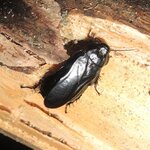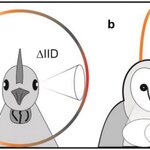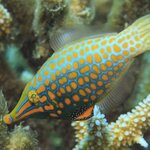Ecology & Zoology

A new species of frog,
Limnonectes larvaepartus, from the island of Sulawesi in Indonesia, does what no other frog does: It gives birth to live tadpoles instead of laying eggs.
A member of the Asian group of fanged frogs, the new species was discovered a few decades ago by Indonesian researcher Djoko Iskandar and was thought to give direct birth to tadpoles, but the frog's mating and an actual birth had never been observed before.
Frogs have evolved a variety of reproductive methods. Most male frogs fertilize eggs after the female lays them. About a dozen species, including…

A pleasant or disgusting odor is not always just a preference, in some cases an organism's survival depends on it.
Odors can provide important information about food sources, oviposition sites or suitable mates and can also be signs of lethal hazards.
In order to survive, organisms must be able to sense information in their environment and to adapt their behavior accordingly. Animals use their senses, such as vision and olfaction, to perceive visual cues or odors in their surroundings and to process and evaluate the information that is sent via these senses to their brains. They…
There is a disease killing honeybee populations around the world but you won't be surprised to find that environmental groups never mention it.
It's called American foulbrood disease and it doesn't get much attention because groups can't use it in fundraising campaigns due to it being completely natural. Science is setting out to cure it just the same, and researchers have found a toxin released by the pathogen that causes American foulbrood disease -- Paenibacillus larvae (P. larvae) -- and developed a lead-based inhibitor against it.
American foulbrood is found throughout Ontario and…

10 percent of the world's ants are close relatives, belong to just one genus out of 323. That genus is called Pheidole. Pheidole fill niches in ecosystems ranging from rainforests to deserts.
Researchers have never really had a global perspective of how the many species of Pheidole evolved and spread across the Earth and a new paper in Proceedings of the Royal Society Series B, suggests that Pheidole evolved the same way twice; once to take over the New World, and then again to take over the Old World.
"If you go into any tropical forest and take a stroll, you will step on…

Cockroaches are most often though of as infecting human homes but a new species and a new subspecies discovered in China prefer to live a hermit life, drilling logs far away from crowds and houses.
It's more common than we think. Out of around 4,600 species of cockroaches worldwide, only 30 are the cockroaches associated with human habitats that gives the bad fame of these creatures. The representatives of the genus Panesthia, to which the new species and subspecies belong, for example are distinctive for drilling logs and xylophagy (feeding on wood), rather than living in houses…

Butterflies aren't the only ones with snazzy stripes. Ben Sale, CC BY
By Callum Macgregor, University of Hull
Ask people to describe what they associate with butterflies, and you will probably get an image of a sunny summer’s day, with a beautiful peacock drifting gently on the cooling breeze.
Ask the same question but for moths, and you are more likely to be told about holes in a favorite wool sweater, or something small and brown beating itself to death against a bathroom light fitting. We don’t view moths with the same affection as their day-flying cousins, and the irrational fear of moths…

A carnivorous plant is a delight for people because everyone knows plant don't catch and eat animals - except some do. Like us, they need animals for nutrition.
Do carnivorous plants also sometimes shake off nature and become vegetarians?
It seems so. The aquatic carnivorous bladderwort, which can be found in many lakes and ponds worldwide, eats little animals but also mixes it up by consuming algae and pollen grains in aquatic habitats where prey animals are rare, and that leads to increased evolutionary fitness if the animals and algae are caught in a well-balanced diet.
The…

How many kangaroos is too many? David Jenkins/Flickr, CC BY-NC-SA
By Brett Howland, Australian National University; David Lindenmayer, Australian National University, and Iain Gordon, James Hutton Institute
Each year rangers in the Australian Capital Territory cull kangaroos as part of the territory’s Kangaroo Management Plan. This year they killed a few over 1,500 kangaroos.
Even though millions of kangaroos are killed for their skin and meat in other parts of Australia, the kangaroo cull never fails to provoke controversy, with opponents suggesting there is no evidence that reducing…

For mammals, the outer ears of mammals play an important function in helping identify sounds coming from different elevations.
Since birds have no external ears, how do they accomplish the same thing? They utilize their entire head, according to a new paper in PLOS ONE
"Because birds have no external ears, it has long been believed that they are unable to differentiate between sounds coming from different elevations," explains Hans A. Schnyder, Technische Universitaet Muenchen
Chair of Zoology. "But a female blackbird should be able to locate her chosen mate even if the source of the…

A species of small fish uses a homemade coral-scented cologne to hide from predators - the first evidence of chemical camouflage from diet in fish.
Filefish evade predators by feeding on their home corals and then emitting a similar odor that makes them invisible to the noses of predators. Chemical camouflage from diet has been previously shown in insects, such as caterpillars, which mask themselves by building their exoskeletons with chemicals from their food.
If animals don't need an exoskeleton to use chemical camouflage, more animals than previously thought could be using this survival…